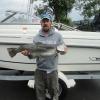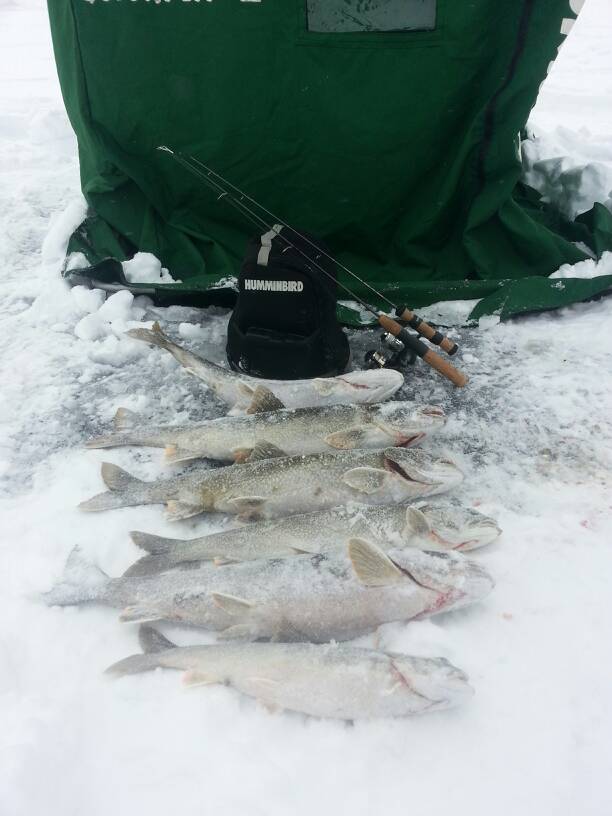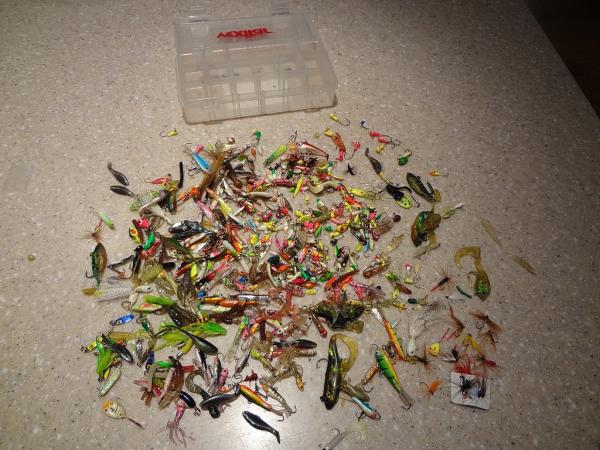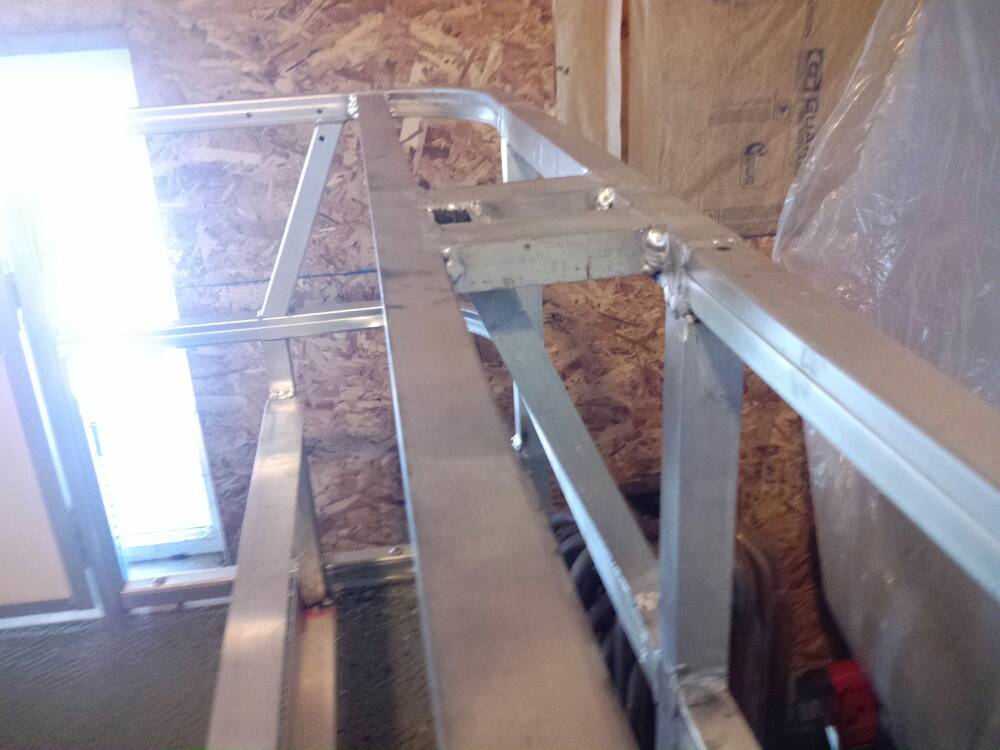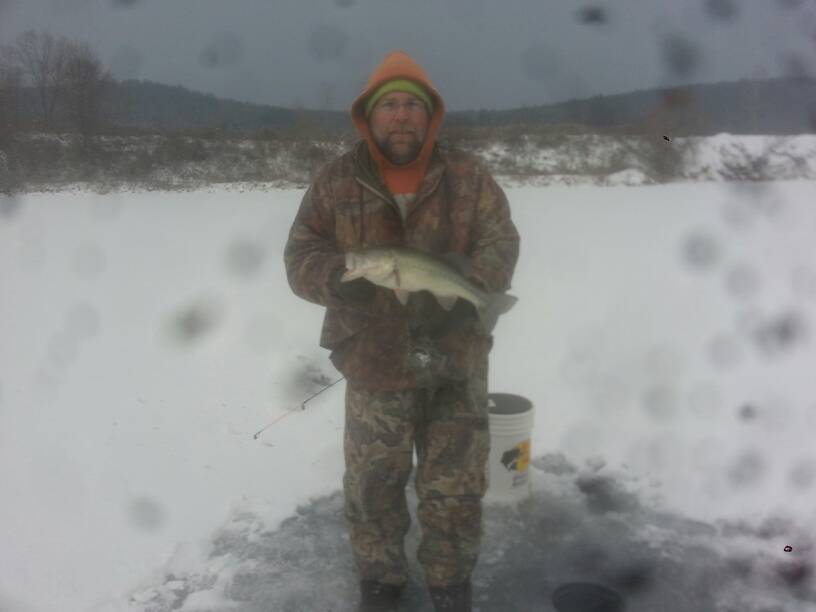-
Posts
13,858 -
Joined
-
Last visited
Content Type
Profiles
Forums
Events
Gallery
Store
Everything posted by Sk8man
-
-
Tim's comments triggered some further thinking on my part....the adult alewives usually run larger on Lake Ontario than in the Finger Lakes in early Spring and they may spawn a little earlier (I'm not sure). Most of my Spring fishing now days is in the Fingers and the sawbelly spawning is usually around the week or so before Memorial Day through early June most years so we're talking mid to late Spring....it makes a difference... and for Lake O Tim's advice is on the mark...when I say standard spoons I mean ones that are from about 3 1/4 to 4 inches while Magnums are about 5-51/2 inches usually which more closely match adult Lake O alewives while 4- 4 1/2 inches is the usual size of most of the Finger Lakes adult alewives (on average)....at least the ones I'm familiar with.
-
Are you talking Lake O or Finger Lakes etc.? and I'm assuming trout/salmon since you mentioned coppers. Lake O = small spoons in Spring for browns but standard sized for everything else and pretty much the same for Fingers in Spring. I usually try to see what size the sawbellies are (sometimes in stomach contents of the fish) and match to that in summer and increase size of spoons accordingly as summer wears on -I only run magnums toward Fall usually and on Lake O... for salmon.I don't run them often on the Fingers anymore because I primarily target rainbows.
-
-
I believe the lead inside is the same diameter in say the 18 and 27 lb but the sheathing is where the difference is and the larger diameter the sheathing the more water resistance so the smaller diameter may sink a little quicker....at least that is my take on it....the real large diameter (36 and 45) is pretty slow to sink because of the resistance except at very slow speed.
-
-
I was out on it last week on the Penn Yan end and there are some places where it is 10-12 inches (probably more now) The problem is the distance to the deeper water on the Penn Yan arm (measured in miles not feet) The Branchport arm is a different matter.....quick deep water access) if the State Park has been plowed....
-
I've had all my trolling stuff ready since before ice fishing started That's what happens to you when you retire
-
Best used for salt water applications but we used to use them back in the 70's for Seth Green rigs and pulling monel wire for lakers on the Finger Lakes. They are much too heavy and bulky for the kind of things done on Lake O. At one point I even used them with my home made planer boards and they worked OK for that.
-
-
I've fished it with Admiral Byrd in the past when the lake froze and caught browns there out from the creek on tip-ups with fatheads....drops off very rapidly out there. Not much structure and often a lot of debris and leaves on the bottom. I've even caught mud puppies there off the aluminum dock in very late Fall
-
Rather than get tangled up in the transmission power issue (RMS vs. PTP) which primarily is a technical measurement/design decision issue I'd be looking at whether the units you are considering will match up to that particular transducer properly and that the transducer is functioning properly to begin with. Rather than dealing with the Humminbird folks I'd contact the Airmar tech folks (very good at what they do) and tell them which models you are considering and ask whether that transducer will match up OK with them. Most units today have enough power to do the job correctly and high power itself does not not guarantee a better result from a unit (target separation etc. also important design factors in a particular unit) and unless you are doing very deep water fishing (e.g. ocean) most units will have the right composition for your needs in terms of showing fish, structure, and bottom features provided they are properly matched to the transducer and the transducer is installed and placed properly for optimal results (may be especially critical for through hull situation).
-
Dave is right....it is best to "get the feel " of it through trial and error. When I first started using them back in the late 70's I used a fish scale and set the line up in a rod holder and hooked the scale to a swivel snap on the end of the line and tested the weight needed to trigger the release. IfI remember correctly I settled for about 3 pounds of pull on it. You may still carry a real small fish on it but I troll at higher speeds a lot and at least you minimize false releases. If you are alert to your rods you will know when you have a small fish on there by the action of the rod itself. I figured I'd rather take my chances on carrying around a small one than continually having to reset the release due to action of the lure/speeds. Once you develop a "feel" for setting them you'll be doing it without even thinking about it....just remember to twist the line in several loops as Dave mentioned for downriggers and leave it without twists for outriggers so you can lengthen or shorten your line without bringing them in.
-
-
-
Unless you know someone with a cottage along the shoreline there is little public access. At the north (PennYan) end most people go onto the ice at Indian Pines Park (a mile or so out of town Route 54A on your left...there is an ice cream place near the turn - follow the winding road to the pavilion area. I don't know whether the Branchport arm is frozen it often isn't but if so you can park at Keuka State Park (also just off 54A). At the Hammondsport end the parking was very limited last time I went in the past. Maybe near the motel? Maybe someone who has been there recently can pipe in.....but I wouldn't hold your breath as the parking there has always been "coveted"
-
-
-
-
-
-
-
-
-


